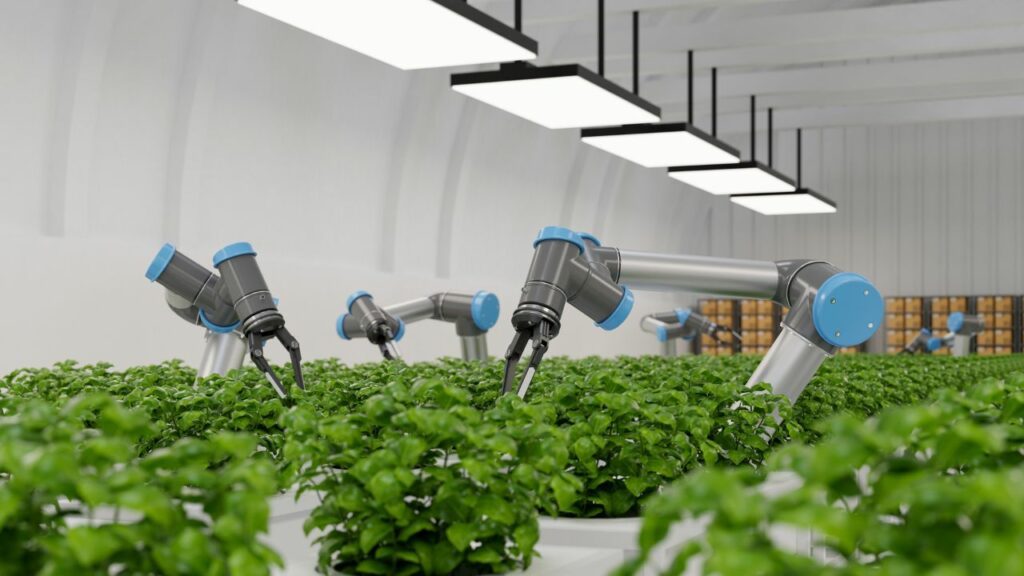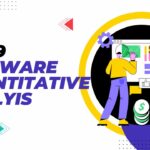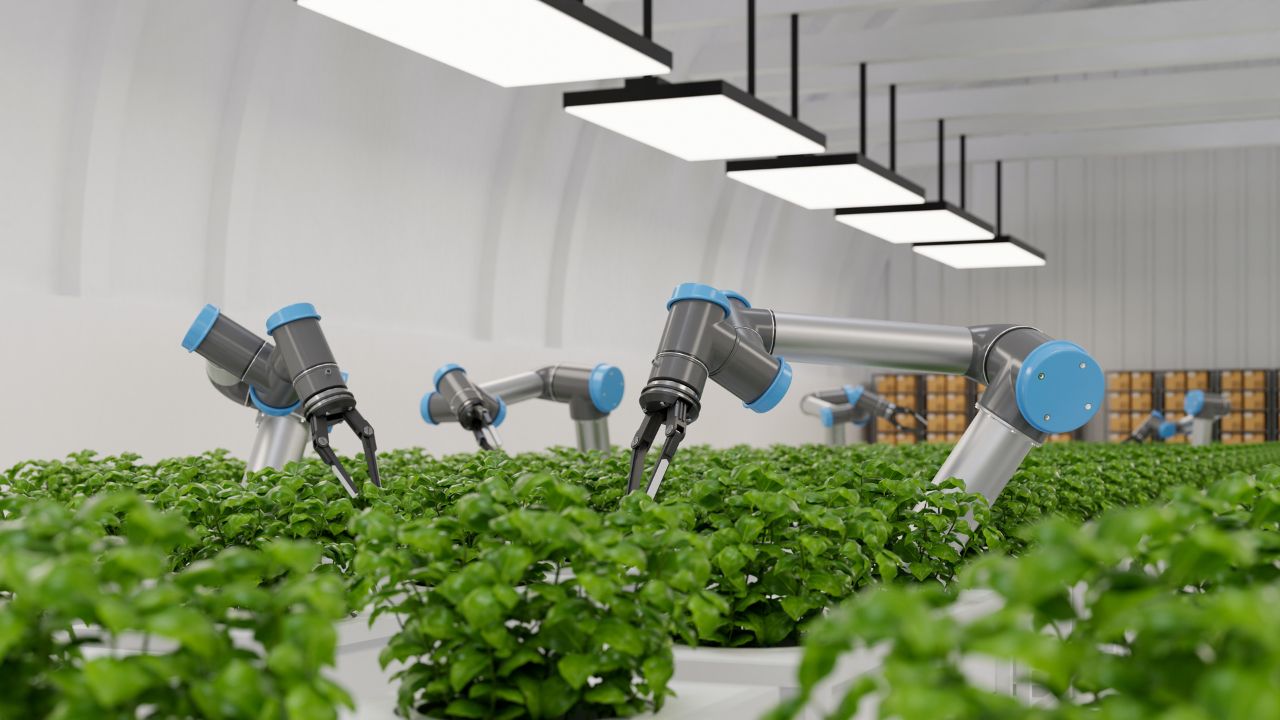 Artificial Intelligence (AI) is transforming the agriculture industry, revolutionizing the way crops are grown, monitored, and harvested. From soil analysis and crop planning to precision agriculture and automation, AI is increasing yields, reducing costs, and improving sustainability. In this article, we’ll explore the role of AI in agriculture and how it is changing the way we produce food.
Artificial Intelligence (AI) is transforming the agriculture industry, revolutionizing the way crops are grown, monitored, and harvested. From soil analysis and crop planning to precision agriculture and automation, AI is increasing yields, reducing costs, and improving sustainability. In this article, we’ll explore the role of AI in agriculture and how it is changing the way we produce food.
What is AI in Agriculture?
The use of artificial intelligence (AI) technologies in the agricultural sector is becoming more common. This is precision agriculture or AI in agriculture.
The agriculture industry employs this kind of technology for a variety of purposes. This includes field harvesting, health monitoring, weed and pest management, and the identification of nutritional deficits in the soil.
The most recent industry statistics show that businesses want to investigate and develop AI solutions for agricultural applications. According to projections, the market for AI in agriculture would increase overall from $1 billion in 2020 to $4 billion in 2026.
How AI is Transforming Agriculture
Farmers now employ AI technologies in agriculture in novel and unexpected ways. They transform food production by modernizing nearly every aspect of agriculture. The following are some of the main issues facing artificial intelligence in agriculture.
Image processing
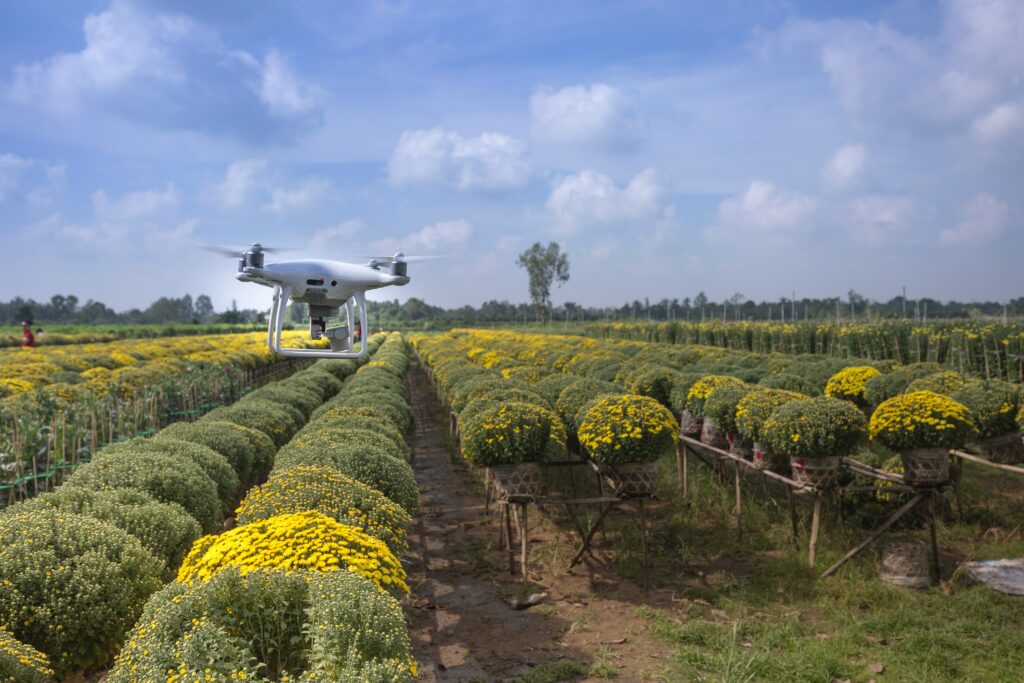
Image processing has evolved thanks to artificial intelligence. Today’s gadgets can see a complete scene, almost like people do.
Farmers can locate weeds to kill them rather than spray the entire crop by using computer vision and smart technology powered by artificial intelligence (AI). Such a strategy permits producing foods much cleaner in addition to visibly saving enormous sums of money.
Artificial intelligence-enhanced drone-based photos make it possible to spot pest diseases and crop damage. It can also monitor an area with more speed and accuracy than ever before, and produce real-time notifications to speed up precision farming and track crop growth.
Plant Disease and Pest Infestations Identification
Farmers have traditionally experienced crop destruction due to grasshoppers, locusts, and other insects. AI gives agricultural workers tools to fight off hungry bugs, assists in recognizing ailments, and improves the nutrition of plants in fields.
Artificial intelligence-enabled sensors can identify pests and weeds, as well as aid prevent the overuse of herbicides or an excessive amount of poisons that end up in our food.
Automation of Agricultural Machinery
Agricultural machinery powered by AI may gather data on expected yields, which enables forecasting of sales, surplus, or shortages. AI-based robotic harvesting equipment gathers fruits and vegetables from farms. This way, farmers can cut back on manual labor, time, and waste.
Businesses also use AI-based smart information systems that process and transport perishable goods. These systems automate the process of pumping milk from tanker trucks to silos, monitor quality, and build a robust data trail that makes it possible to trace the delivery of liquid from farms to stores.
Physical tracking systems with face recognition technology integrated make it simple to manage a vast array of cattle with little human involvement. Farmers are able to precisely record eating habits, observe individual group behavior, and diagnose lameness in advance.
The Importance of AI in Agriculture
AI aids in increasing the farm’s productivity. The net output from the field is improved via yield management, AI-enabled productions, and automated and autonomous farming operations. Artificial intelligence-enhanced picking, packing, and sorting improve food production.
Benefits of Using AI in Agriculture
Automatic harvesting
Harvesting is frequently characterized by farmers as being expensive, time-consuming, and potentially hazardous given the COVID-19 pandemic’s progress. Agricultural enterprises are losing money as a result of a lack of automation due to inefficiency and slow speed
An autonomous harvesting robot has the following features: a camera, AI-powered abilities, and telerobotic arms. When the program detects fruits or veggies, it utilizes the camera to tell the arms to pick them up. Although it can seem like a slow system, reports claim that robots are more productive than people, work continuously, and are over 90% successful.
Predictive analytics is the engine that drives this innovation. A group of algorithms driven by AI and machine learning analyze historical data to forecast future events.
To put it simply, AI engineers “teach” the algorithm to recognize items (in this case, fruit and vegetables) so it can operate on its own. The camera will identify the objects in its vicinity. Once spotted, the robot identifies if they are ripe for picking.
Automatic weeding
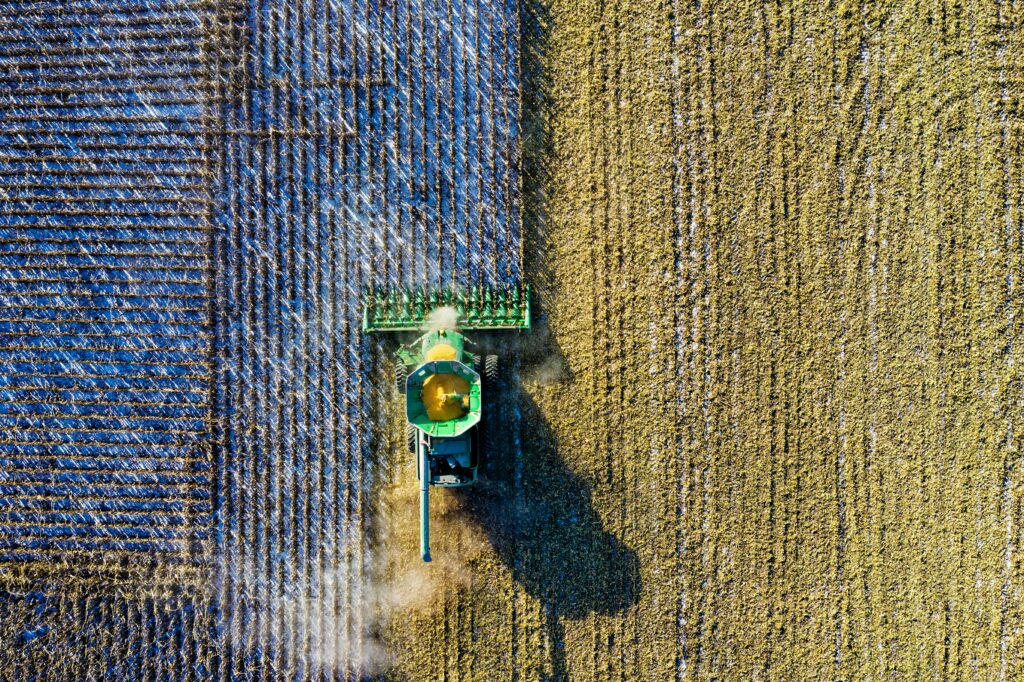
Weeds deprive crops of sunshine and nutrients and make it simpler for pests to damage them. Farmers now have a new tool in their arsenal, one that replaces physical labor. It is a machine that can eliminate 100,000 weeds each hour using lasers.
Driving through crop fields allows an AI-powered robot to first locate and eradicate weeds. The AI software recognizes weeds and issues an instruction to eradicate them after viewing crops and weeds on the cameras below. Lastly, high-powered lasers use thermal energy to destroy weeds without disturbing the soil.
Application of pesticides and herbicides

AI and machine learning in agriculture can identify when plants are ill or harmed. This technology analyzes aerial photos of fields to pinpoint the best locations for pesticide and herbicide spraying.
AI assists in identifying issues even on small scales by routinely evaluating thousands of drone-shot photos.
It can detect pest attacks and issues with plant health. It also aids in helping farmers avoid using pesticides and herbicides excessively. Finally, they can boost the upkeep of soil fertility.
Autonomous drones can spray insecticides and herbicides in specific regions besides monitoring human health. Crop-spraying drones are excellent in streamlining field management, lowering labor costs, and boosting agricultural yields, according to research.
Improved soil health monitoring
To avoid crop loss, it is crucial to be able to identify illness in the soil. The majority of farmers use conventional soil analysis methods, but the outcomes are frequently insufficient to stop diseases and other problems.
A soil sample is initially taken in order to identify all of the microorganisms and other soil components that are present. The data from the sample is then compared to a sizable database of soil data using a machine learning technique.
Findings show characteristics including moisture content, nutrient deficits, pH, and microorganisms in the sample. Finally, experts review the findings. They also determine the risks of particular diseases and suggest treatments depending on the microorganisms and soil content.
Plant disease detection
Plant ailments and pests cause the decay of 20%-40% of the world’s food production. Because of this, numerous plant disease diagnosis applications have started to appear everywhere.
They assist businesses in locating and treating crops affected by diseases and pests as well as using AI algorithms to detect health issues. AI-powered recognition produces results by comparing input photos to a database.
In order to locate the issue, the machine learning system searches for distinctive patterns of plant illnesses. Examples of this are spots and discolorations that resemble mosaics.
More efficient irrigation of farmland
70% of all water use worldwide is for irrigation in agriculture. Farmers are seeking for strategies to get rid of waste and make the most use of the resource because crops need a lot of water.
Drones with AI software are already available, and they use sophisticated analytics and high-resolution aerial images to gather data on irrigation systems on fields. Continuous observation identifies issues like blockages and leaks and assesses soil health.
Applications of Artificial Intelligence in Agriculture
The rate of artificial intelligence adoption in the agriculture sector has altered the overall results of farming operations. The majority of startups in the sector are now embracing AI-enabled methods to boost agricultural output efficiency.
Weather Prediction

We have seen a sharp rise in pollution levels and unpredictability in the weather over time. Farmers have found it challenging to predict the ideal time to plant seeds due to the changing environment, which is where AI can help.
It is simple to acquire knowledge of how weather, seasonal sunlight, wind speed, and rain will affect agricultural planting cycles with the aid of artificial intelligence. Farmers will use weather predictions to examine and plan when the seeds should be sown.
Soil and Crop Monitoring in Real-Time
One of the key elements affecting any plant’s development and well-being is the soil. The soil’s nutrient content greatly influences the quality of the crop. As a result of deforestation, the soil quality gradually declines, making it increasingly challenging for farmers to determine which soils are ideal for which crops.
Using Drones for Data Collection
AI and machine learning can help increase crop yield in agriculture. These technologies provide real-time sensor data and visual analytics from drones
Precision Farming
Precision farming is a method that uses data inputs in precisely the right amounts to get the highest agricultural yields. Farmers can get personalized planning for their farms using cellphones and AI software.
Farmers can satisfy the needs of our present and future worlds, including greater food production sustainably, growing income, and doing so without depleting any of our natural resources.
AI-Powered Robots
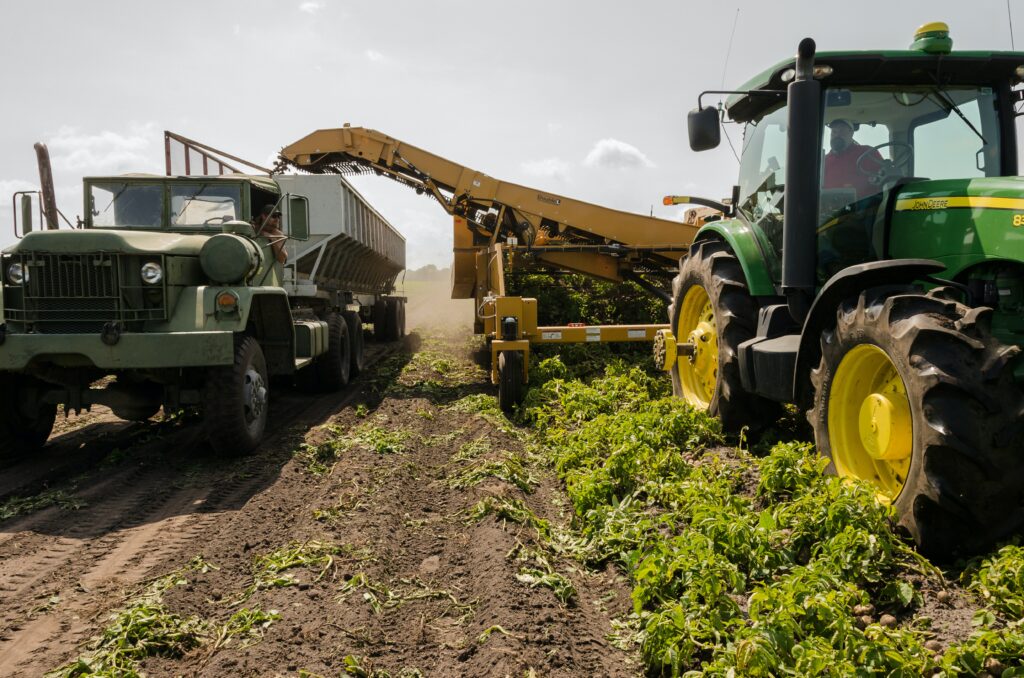
Companies using AI are creating farm robots that can handle a variety of duties. The AI developers will teach these robots to manage weed growth that is out of control and gather crops.
The objective is to automate these manual processes. This is so that the robots can complete these tasks more quickly and in greater quantities than they could be by humans.
AI-Enabled Surveillance Systems
In the agricultural sector, artificial intelligence (AI) technology enables the use of satellite photos to match them with historical data to detect animal or human breaches.
This lessens the possibility of any domestic or wild animal destroying crops. AI systems are also capable of spotting tiny insects like grasshoppers and locusts. Alerts are promptly delivered to the farmers’ smartphones as soon as they find an incursion. After discovering it, they can take the necessary precautions.
AI Use Cases in Agriculture
- Ag Butler is an agricultural software that aims to address the labor shortage problem. By establishing a network of agricultural laborers, it connects people looking for farm jobs with farm owners.
- With the Plantix app, you can transform you smartphone into a mobile crop doctor. It can quickly and precisely identify pests and diseases on crops. Plantix also offers a full range of crop management and production services.
- Due to their capacity to work continuously, AgroBot robots are more effective and reduce the cost of precision weeding, hoeing, and harvesting. With its sophisticated AI system, the Argobot E-series can not only pick up crops but also determine their level of ripeness in the field.
Challenges in Adopting AI Agriculture Solutions
There are several reasons why some businesses are still hesitant in adopting AI into their agricultural pursuits:
- Confusion. Occurs when a provider of AI software fails to explicitly describe implementation and maintenance
- Absence of expertise. Farmers must receive ongoing instruction and training to correctly implement AI hardware and software.
- The digital infrastructure that is out of date. Even the newest AI solutions may frequently be integrated into current infrastructure (farm management software, tractors, spreaders, etc.)
Future of AI in Agriculture

The future of AI in agriculture is simply the sophisticated robotic and automation software solutions and technologies. The agriculture industry can guarantee maximum efficiency with the least amount of farming work thanks to these high-tech solutions.
The continual revolution of agribusiness that AI technologies promise is crucial for all of humanity. By using less soil-depleting fertilizers and pesticides, wasting less water, and automating labor, SMEs can avert ecosystem degradation.
All of that will contribute to cost-effective food pricing. It’s challenging to feed people while protecting the environment, but AI might be the solution.
FAQs
What is artificial intelligence in agriculture?
Artificial intelligence refers to a machine’s capacity to imitate certain functions of the human brain. With this, farmers can use AI to boost crop productivity. The agriculture industry can now solve problems associated with food insecurity globally.
What’s the future of agriculture and AI?
Precision agriculture, often known as artificial intelligence systems, is assisting in enhancing the overall quality and accuracy of harvests. AI technology aids in the detection of pests, plant diseases, and undernutrition in farms.
AI sensors, for instance, can identify and target weeds before deciding which pesticide to spread across the area.
How does artificial intelligence drive the growth of emerging technology in agriculture?
AI aids farmers in selecting the best seed for a given weather circumstance. AI-powered solutions will assist farmers in increasing crop quality, producing more with fewer resources, and reducing the time it takes for products to reach the market.
Artificial intelligence has an impact on how people will live in the future practically everywhere. For the foreseeable future, it will continue to be the main force behind developing technologies like big data, robotics, and the internet of things.

